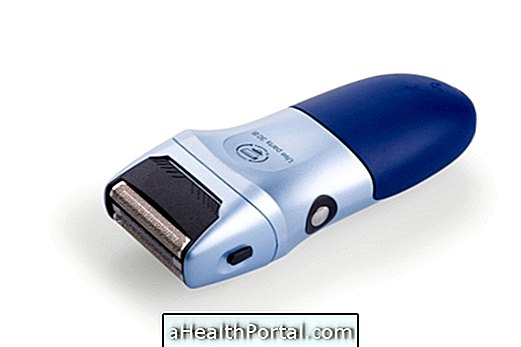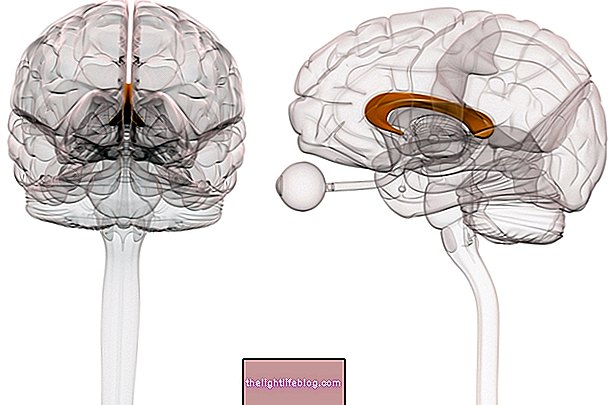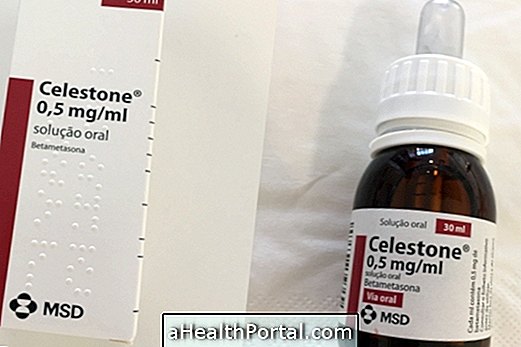In physical therapy there are great treatment options to control urine, which are indicated before or after surgery.
Physical therapy consists of strengthening the pelvic floor muscles to prevent involuntary loss of urine, but to have the expected effect it should be done daily at home, in addition to going to the clinic at least once a week.
In physiotherapy for urinary incontinence, Kegel exercises, electrostimulation, biofeedback and vaginal cones can be used. This type of treatment may be indicated for all cases of incontinence, whether of urgency, effort, in men, women, children, and even after prostate withdrawal.
We indicate below how each technique can be done.

1. Kegel Exercises
To perform Kegel exercises first you must identify the pelvic floor muscles: just try to hold the pee while you are urinating. If you can at least slow down the urine stream, that means you are contracting the right muscles.
To perform these exercises you should empty the bladder, peeing, and then lie on your stomach and do this contraction 10 times in a row, and then rest for 5 seconds. Then you have to do nine more repetitions of this series, totaling 100 contractions.
After a few days you can add a ball between the legs or elastic bands to help maintain concentration and facilitate the completion of the complete series correctly.
2. Hypopressive Exercises

To perform these exercises you should be sitting or standing up and shrinking your belly as much as you suck the pelvic floor muscles as well. While performing this exercise you should breathe normally, but to ensure that the muscles inside the vagina are being contracted correctly, it may be associated with the use of electrostimulation.
3. Vaginal Cones
A few weeks after successfully performing Kegel exercises, the physiotherapist may indicate the introduction of small cones into the vagina to further strengthen the pelvic floor muscles. The cones have different weights, and must first start with the lightest. For best results the physiotherapist can indicate that the exercise is performed in different positions, sitting, lying or standing, in order not to let the cone fall from the vagina.
The first exercises should be performed with the woman lying down and then the intensity of the exercises should increase until the woman can keep the cone inside the vagina for at least 5 seconds in the standing position, and then when doing a squat, for example. Another exercise is to insert the cone into the vagina and do not drop while walking for 15 to 20 minutes.
5. Electrical stimulation
Electrical stimulation is another feature in which the device is placed inside the vagina or around the penis and it emits a light, fully supportable electric current that performs involuntary contraction of the perineum. Studies have proven that this does not bring a great benefit in the treatment, but can be of great help for women who do not know exactly which muscle they should contract, being a good option for the first sessions.
5. Biofeedback
Thus, as in electrostimulation, a small device must be inserted into the vagina, connected to a computer, which will generate images and sounds during the contraction of the perineum. This device can be useful for the woman to be able to identify the muscles she should contract, being more aware of the force she has to perform during each movement.
6. Good sitting posture

It is also part of the treatment to always maintain good sitting posture, because this way there is less pressure on the pelvic floor, which contributes to the cure of incontinence faster. To sit in the correct posture you should always sit on top of the bones of the butt, without crossing the legs, and maintain a small contraction of the abdominals. In this position the pelvic floor muscles are naturally strengthened.
How to know if treatment is working
In order to confirm that the treatment performed is having the expected effect the physiotherapist can use the perineometer (Wilcoxon test) and the test where 2 fingers are inserted into the vagina, and the perineal contraction (Wilcoxon test) is requested. Thus it is possible to evaluate the contraction capacity of these muscles from the first session.
Time to treat urinary incontinence
The time of treatment of urinary incontinence depends on the degree of impairment of the perineum and commitment of the person in performing the exercises. The average duration of treatment varies from 6 months to 1 year, and in approximately 6 to 8 weeks it is possible to notice the first results. But after this period it is advisable to continue performing the exercises weekly, to guarantee the results for long periods.
In some cases the doctor may recommend surgery to cure incontinence, but in about 5 years, resurgence of the same symptoms is common, and it is necessary to resort to physical therapy again.
How Food Can Help
Here's how to drink water in the right measure and what else can you do to get pee-controlled in this video:


























